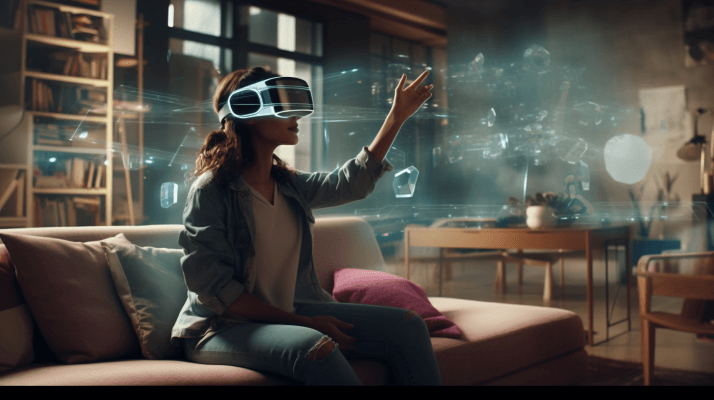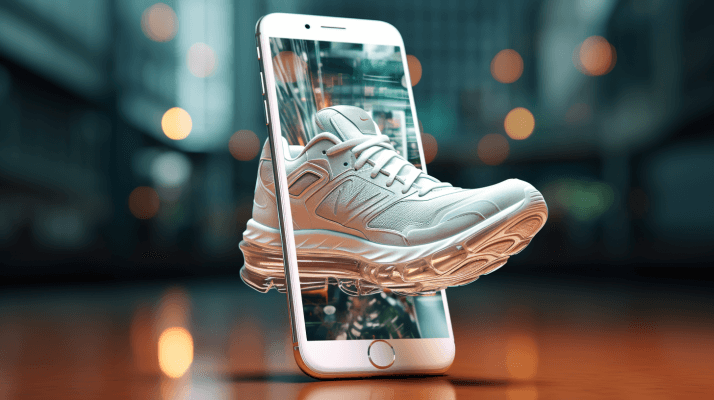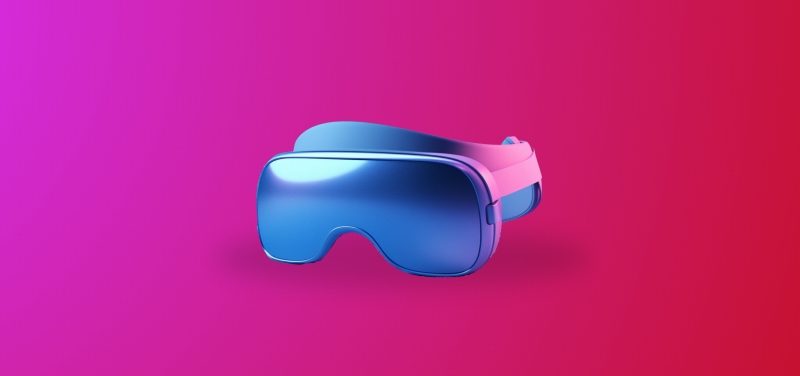Same as all innovations before, immersive commerce is changing the retail ecosystem according to the evolving expectations of buyers and sellers, making online shopping experience more and more realistic and fun. Fun is what shopping should be about, for buyers at least. Shopping isn’t just about spending money to buy something necessary, something that a person needs, but about enjoying the very process of looking for something, trying it, comparing and maybe finally buying it. This is why “window shopping” or “browsing” exist.
Whatever we call it, looking through goods on display in a brick-and-mortar shop or “e-window shopping” (for online experience) is a well-known leisure activity. While physical commerce has been using the emotions and physical experiences of potential customers to its advantage for a long time, ecommerce has been utilizing visual experiences to make the online selling process more effective. Indeed, if you remember visiting a nice brick-and-mortar shop with some mellow music, enticing scents, dim lights, pleasant shop assistants, you understand that all those things make shopping an enjoyable and immersive experience rather than just spending money on some goods.
For online shopping, the answer to that should be immersive commerce , which is often called an extension of ecommerce that uses technology to create a more realistic, interactive and enjoyable customer experience. A combination of virtual reality (VR), augmented reality (AR), and 360-degree video allows potential customers to virtually explore products, try them on, and interact with them in the digital world in a way that wasn’t possible before. Recent years have seen a shift to ecommerce, which gave a huge boost to immersive commerce, based on growing demand for interactive online customer experience.
In this article, we’re going to look at the following points:
1. Benefits of immersive commerce for retail and customers
2. Types and examples of immersive commerce solutions in retail
3. Immersion in digital experience as the future of commerce
Benefits of immersive commerce for retail and customers
Immersive commerce offers a number of benefits to both businesses and consumers. The most obvious benefits to retail startups and businesses would be increased sales, improved customer engagement and loyalty, and reduced returns. For consumers, immersive commerce provides a more realistic digital shopping experience, allowing them to try products before they buy them, which increases their purchase confidence.
According to Martin Gassner, who’s been working as a designer and manager in digital tech since mid-nineties, implementing the elements of immersive commerce into ecommerce shouldn’t be done just as tribute to a trend, because digital immersion is becoming mainstream, but rather a part of a broader strategy. Some of the goals to reach with the help of immersive commerce are:
Boosting KPIs for retail startups and businesses
Making your content more engaging should help attract new customers and keep existing ones longer online, motivating them to buy more and more often by providing new digital experiences.
Making ecommerce a more inspirational and immersive experience
This is about e-window shopping, which gives information and inspiration even if the customer isn’t buying today.
Emotional experience for a customer or emotional brand building
You can build trust and stronger emotional ties with the help of providing a more realistic and enjoyable digital shopping experience. After all, everyone likes to be entertained and feel comfortable.
Types and examples of immersive commerce solutions in retail
As consumers are becoming pickier, immersive commerce helps them to bridge the gap between real life shopping and online shopping by providing interactive shopping experience and personalized approach. There are some types of immersive commerce solutions that really help plunge into digital shopping and become more confident about the chosen item.
360-degree product views
360-degree product views or 360 spin images isn’t a novelty. The first 360-degree product views appeared in 2009, when the company Virtools released a software that allowed users to create and view 360-degree videos. Only three years later, 360-degree product views became more widely used, when the company Matterport released a software allowing users to create and view 360-degree panoramic images.
Google released its own 360-degree product view technology in 2014, which allowed users to view products on Google Search and Google Shopping, while Amazon adopted 360 spin images only in 2018. Today, this immersive commerce solution is used by many retailers and taken for granted by customers.360-degree product views allow consumers to visualize the products, see them from different angles, and make a more grounded decision about a purchase. For a business owner, 360 spin images might be more expensive compared to standard photography, but it’s paid off by the potential return on investment, according to Jeff Hunt, founder and CEO of 360 imagery provider Snap 36. He says that a category of merchandise that doesn’t benefit from 360 spin images is yet to be discovered, as even a company selling clear bottles saw a 25% increase in top-line revenue after implementing the technology.

VR or virtual reality
VR is a technology that’s created with the help of a VR headset which blocks out the real world and displays a virtual environment, so that a user plunges into virtual reality. It can be used for ecommerce and a variety of other spheres, including healthcare, navigation, gaming, entertainment, and education and others.
In retail, VR is normally used to create a virtual store that allows customers to walk around and interact with products, which is especially helpful for selling products that are difficult to see or understand in the real world, such as furniture or cars.
Speaking about cars, BMW is a great example of using VR and AR technology for developing a new model. The BMW iX is the first car that was developed at BMW with the help of gaming technology. Collaboration with video game developer Epic Games since 2015 made it possible to visualize vehicle functions and new interior concepts in a mixed reality system that will help simulate journeys through cities, test visibility over the area around the car, check how viewing angles and sitting positions affect the view on the screen. All this gives the development engineers valuable real-life road situations in a real car.
In retail today, VR technology has given life to the following immersive commerce solutions:
- Virtual product showrooms
Virtual product showrooms enable customers to interact with products in a realistic way. This can be incredibly helpful for selling products that are large or expensive, such as furniture or cars. BMW, Audi, Porsche, Jaguar Land Rover are some of the brands using VR showrooms for their customers to see a different color or the latest model that isn’t yet available in a particular location.
- Virtual training and tutorials
VR can help create virtual training and tutorials that enable people to learn new skills or procedures in a virtual environment, which drives customer satisfaction and employee efficiency in case of training at work. Using VR, Sephora has come up with a number of virtual reality tutorials which simulate a visit to a makeup studio with a virtual makeup artist guiding them through each step of the process.
- Virtual customer service
Virtual customer service representatives help customers who are located in remote areas with their questions or problems.
VR has a huge potential to revolutionize the retail industry with more innovative solutions to come soon.
AR or augmented reality
AR is a type of technology that provides a composite view by means of mixing the real world view of the user and a computer-generated image. The first association that springs to mind is that of pokemon-go, when you’d see people glued to their smartphones in the streets chasing non-existent pokemons, and yet they existed in augmented reality.
AR shopping allows consumers to see how products would look in their own home or on their own body. They can also interact with products by rotating them or zooming in on them with the help of AR. There are some ways AR is used in retail now, but one of the most popular solutions that apparel brands invest in now is a virtual fitting room.
- Virtual fitting room
According to Statista, global virtual fitting room market size was estimated to increase to $4.86 billion in 2023. It’s also projected to reach almost $15 billion by 2029. A virtual fitting room makes it possible to see how the style, size, color of a particular clothing item would look on a customer without visiting a store or physically touching it. AR and/or AI technologies can place the virtual item over the live video feed of the customer (3D model created by AR or AI) with the help of smartphones or mirrors. As a result, visitors are 65% more likely to place an order after interacting with a product in AR, according to the case study on the couture high-fashion brand Rebecca Minkoff. One more example is Nike using AR to allow customers to virtually try on different shoes and see how they would look on their feet.

- Product visualization
AR technology can help visualize products in a real-world setting, which is especially helpful with items that are difficult to visualize, such as furniture or appliances. One of the examples of AR is IKEA’s Place app that shows how different pieces of furniture might look in their homes.
- Instructions/guides
AR can be used to provide instructional guides for products that are difficult to assemble or use.
- Brand awareness
AR can also create interactive experiences that raise brand awareness by creating entertaining experiences with the help of cutting-edge tech. Sephora, Maybelline and L’Oréal use AR to help customers try on makeup virtually, which is fun and really helps a customer choose shades and colors.
All in all, there are lots of successful examples VR and AR configuration in retail and marketing among other spheres today, and the companies adopting new technologies are sure to gain a competitive edge over the others.
“While firm predictions are difficult to make, what we do know is that we’re already headed toward a more immersive internet in the future.”
Bernard Marr
Immersion in digital experience as the future of commerce
Human beings are visual by nature as the human brain processes images 60,000 times faster than text, and 90 % of all information transmitted to our brain is visual. It should bring us to the conclusion that technologies helping visualize objects are bound to succeed, even though they might seem slower to gain traction at first.
According to the study conducted in 2022 and published by Statista, less than 10 percent of companies in the consumer goods and retail industries were adopting immersive technologies in their organizations. And that is clear because adoption of immersive commerce solutions requires the use of advanced tech like VR headsets and AR glasses, which can be expensive for both businesses and consumers. Designing sophisticated apps powered by AI and creating immersive commerce content is time-consuming and not cheap. But as technology continues to develop and improve, it’ll surely become more and more affordable, accepted by users and even taken for granted in some 5–10 years.
Wrapping up
According to the words of Bernard Marr, a world-renowned futurist, influencer and thought leader in the fields of business and technology, “evolution is happening now, and we’re seeing breakthroughs in the news on a daily basis.” We can already experience “the metaverse” in the form of “a more immersive internet”. So, now is the time for business to catch up with the early adopters of immersive commerce not to lose the battle for customers in the future.

.png)




